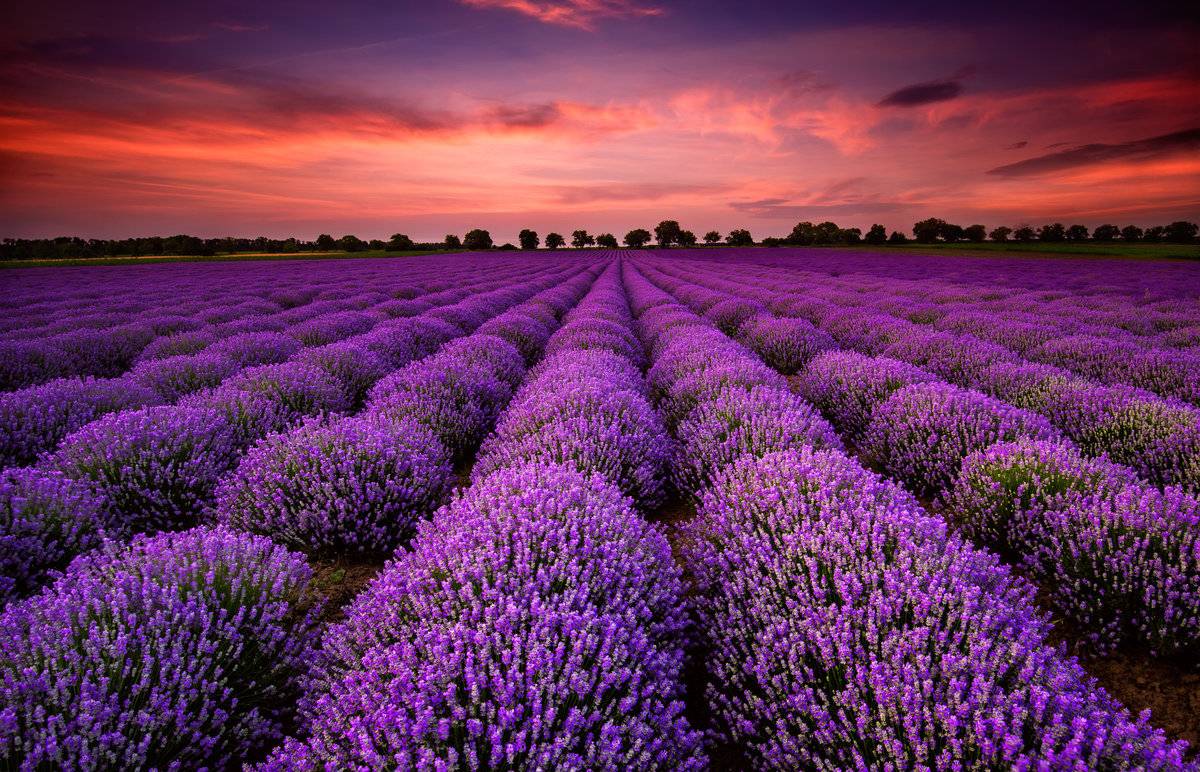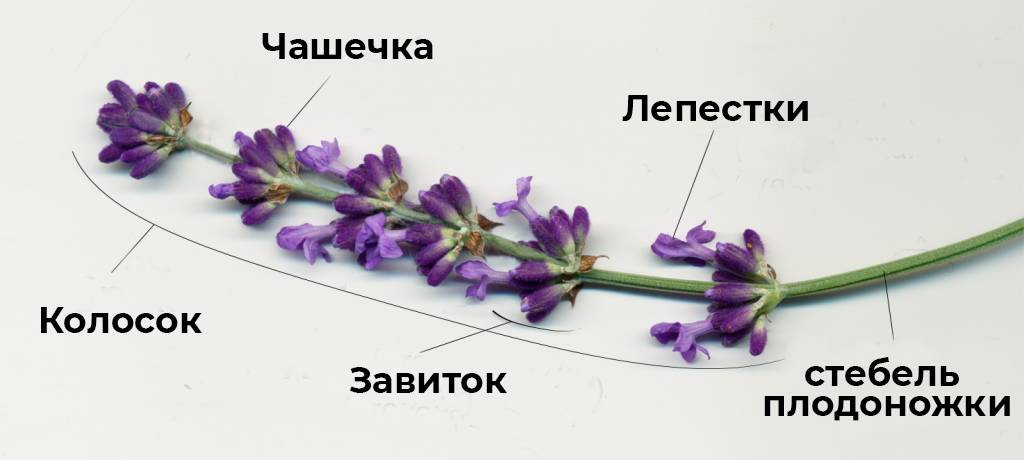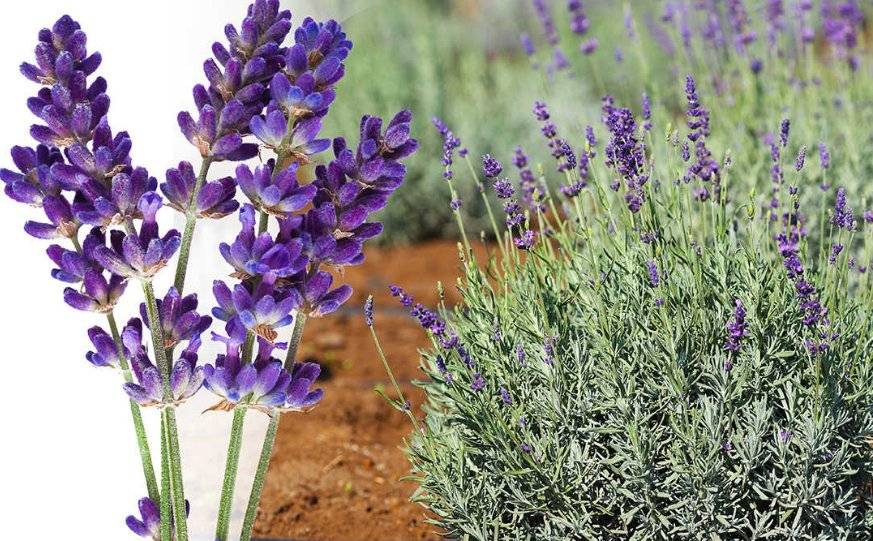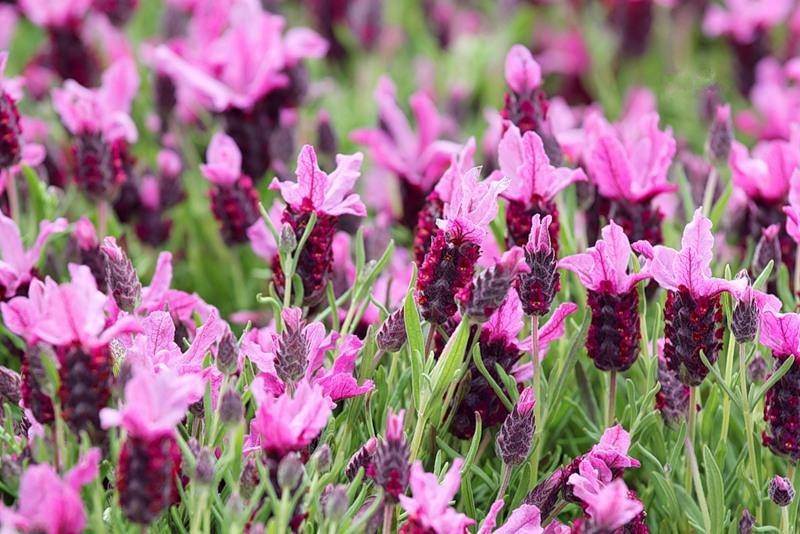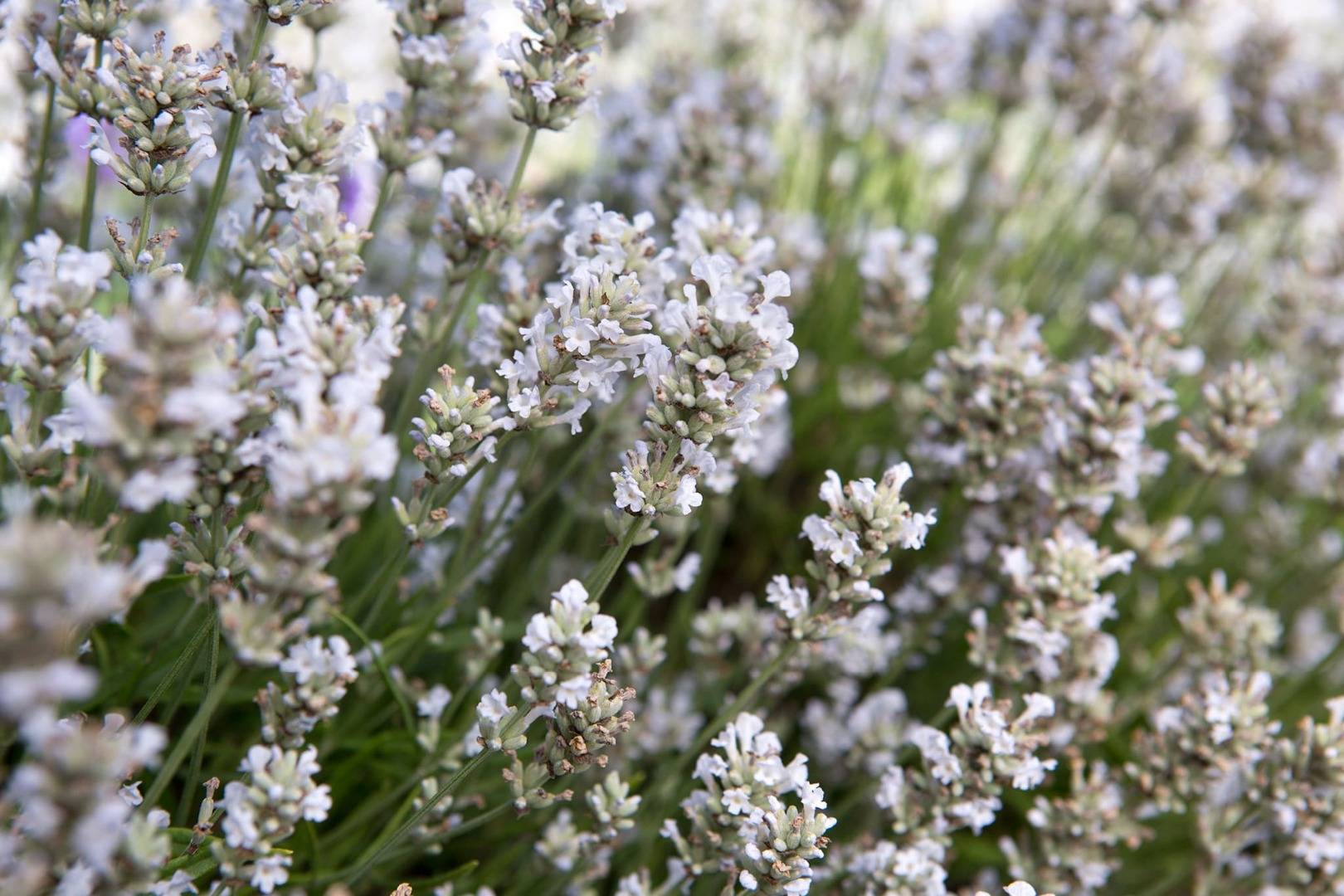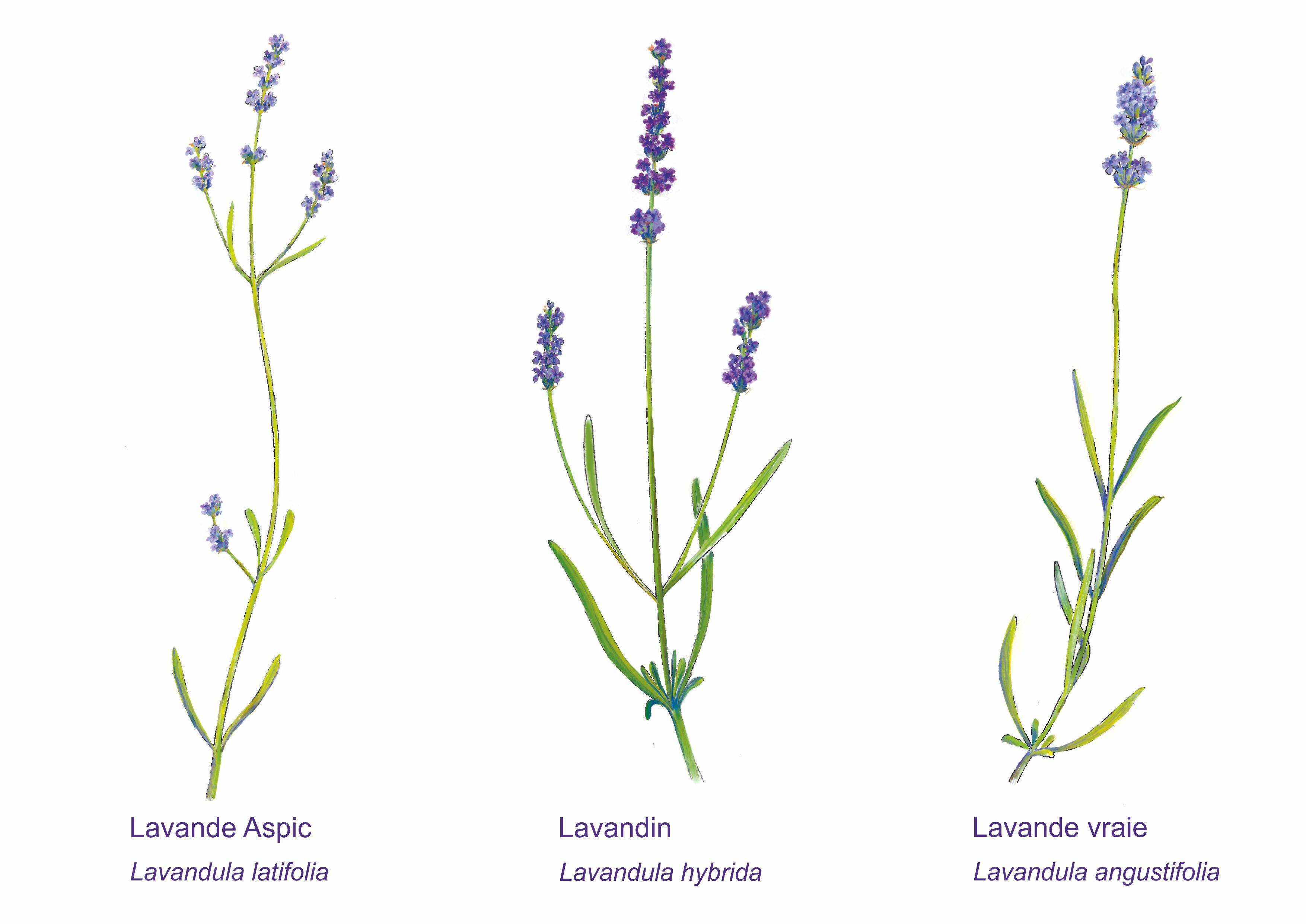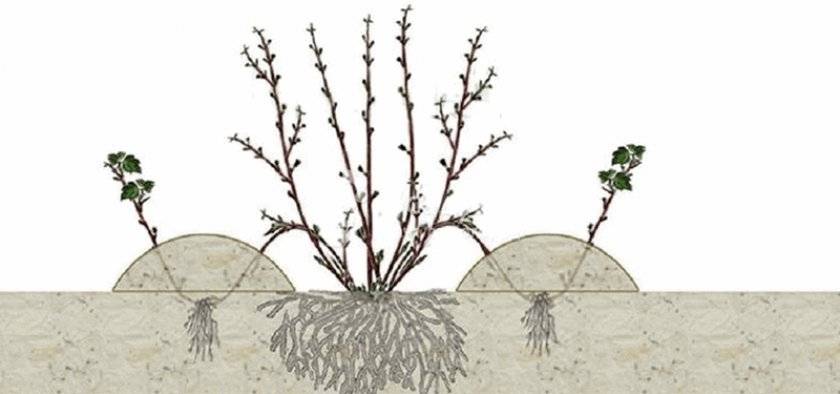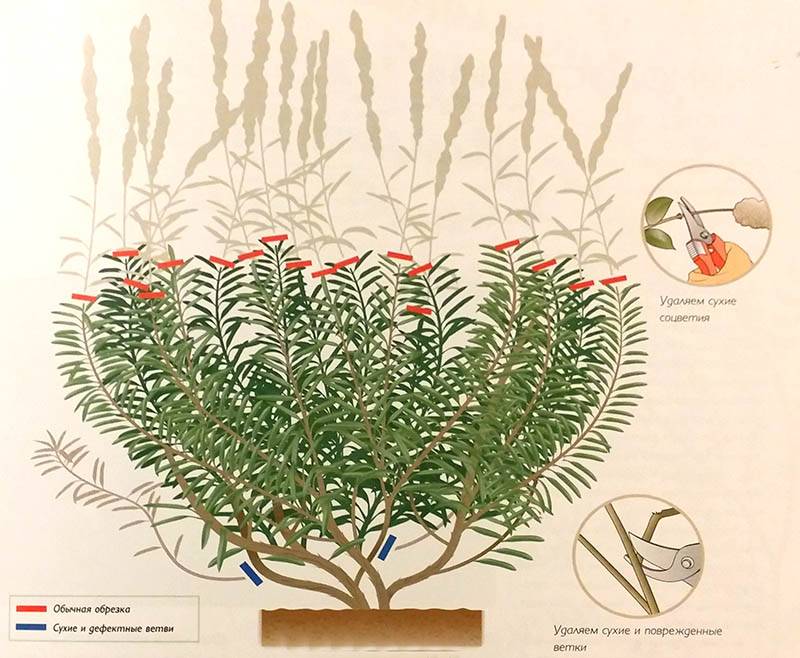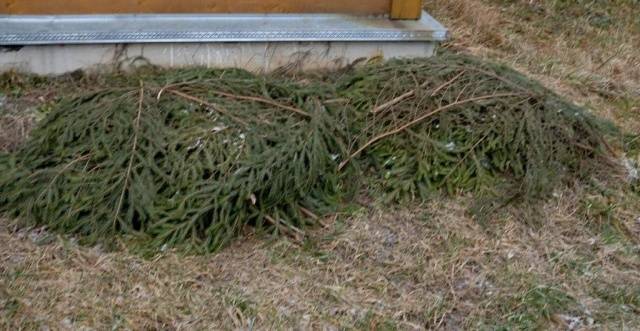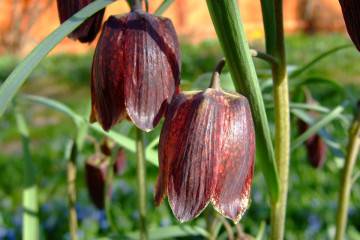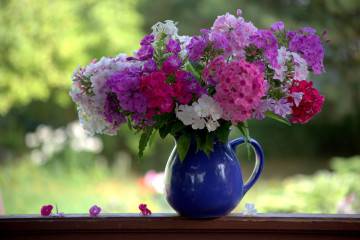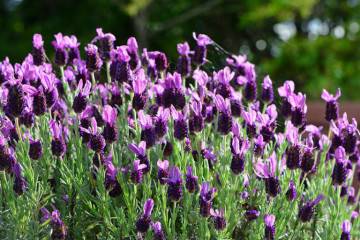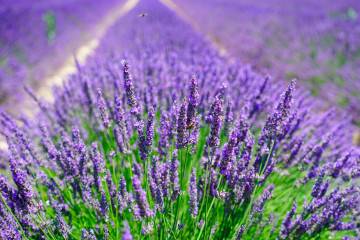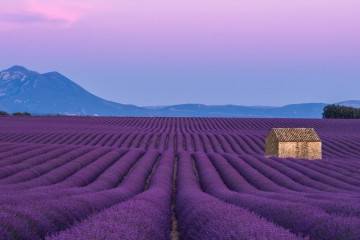What Lavender looks like
Content:
Lavender is an evergreen shrub that has won the hearts of gardeners with its beauty, grace and delicate aroma. The plant is grown for decorative purposes, as well as raw materials for various fishing industries. Most countries breed large quantities of lavender. The French province of Provence is the largest supplier, about 80% of this plant is grown on its territory, which is used throughout the world.
What Lavender looks like
Lavender is a perennial plant native to the Mediterranean, North Africa and India. In different countries, it is called differently: levanda, lavender, and some simply call it colored grass.
Plant characteristics
Lavender belongs to the Lamiaceae family, has about 30 species. Plant height from 20 centimeters to one meter. The root is powerful, woody, grows up to three meters. Branched and spreading stems. The lower branches go into the ground, thereby obtaining the necessary moisture. The foliage is lanceolate, small, gray-green in color. Depending on the type, the sheet can be narrow or wide. The edges of the deciduous blade are slightly curved downward.
What lavender flowers look like
The plant attracts attention with its lush inflorescence. Its flowers are two-lipped, irregular in shape, collected in 5-12 pieces in spike-shaped inflorescences. The color ranges from purple-lilac to white, blue or pink. The lavender flower smells like an oriental spice. The aroma is sharp and tart, which makes it a very wide range of applications.
History of appearance
Lavender is an unpretentious plant that has been popular since the days of Ancient Greece and Rome. The Romans used the plant to disinfect and treat wounds. The Latin word "Lavare" means "to wash and cleanse."
In ancient times, the flower was considered sacred. The inflorescences were dried and used as a talisman. Dried flowers were placed in bags, it was believed that it protects the house from evil spirits. Also used in Roman baths. The plant was part of the embalming ointments. In addition, the floor in churches and dwellings was strewn with flowers.
Description of species
There are about 30 types of plants, only two types are grown in gardens:
- narrow-leaved;
- broadleaf.
Most of the existing varieties were bred from these two crops. Many types of lavender only grow in warm regions. For example, multi-cut lavender varieties are found only in areas with a warm climate. Which variety is suitable for growing in Russia, the answer is only one narrow-leaved species. It is frost-resistant and able to survive the harsh Russian winters. Garden varieties include variegated lavender.
Popular types include:
- Lavandula angustifolia or Lavender Real. The plant is quite tall about one meter. The leaves are narrow, gray-green in color. Blooms from July to August, inflorescences are collected in 6 - 8 pieces, at the top of the stem. Small flowers of blue, blue, lilac shades. Emits a spicy and fragrant aroma.
- Lavandula tifolia or Broadleaf lavender. The height of the bush is from 1 to 1.5 meters. Differs in wide leaves and early flowering (April-June). The inflorescence has a rich color spectrum from white, pink to deep purple hue. This species is suitable for growing in rorshka. French lavender loves warmth and attention.
- Lavandula dentate. The height of the bush is no more than one meter. This is one of the most thermophilic species. A drop in temperature to -14 degrees leads to the death of the plant. The leaves on the stems are silvery, as if cut at the edge. Blooms from July to August. The inflorescence is purple or blue.
You should also highlight the field lavender, mountain, variegated, dwarf and decorative.
Mountain lavender
The mountain lavender plant in the wild prefers to live near mountains or hills. You can also find her on wastelands, in abandoned gardens, on the side of the road. In floriculture, wild lavender is planted in flower beds, rabatki, rock gardens. The plant is biennial, up to 70 centimeters high. Due to its grayish branched stems and bluish flowers, it is often used in landscape design.
The most popular variety of this variety is Stehad Lavender. At the top of the stem is a "tuft of leaves" of bright pink or crimson color. The inflorescence is small, dark purple in color, it seems as if they are black.
Dwarf
Dwarf lavender is a small plant from 20 cm to 40 cm. Popular varieties include:
- Hidcote Superior;
- Lady Lavender;
- Little Lottie;
- Munstead;
- Rosea;
- Sarah;
- Alba.
Interesting facts about varieties
Lavender flowers enchant with their beauty and aroma. The plant has attracted the attention of gardeners for centuries. Lavender varieties and interesting facts:
- Lavender or Lavandin? There is an opinion that the former is good and the latter is bad. You can often find information that lavender is real, but lavender is not. Lavandin is a hybrid cultivar with lavender-like flowers. It was bred by crossing narrow-leaved and broad-leaved species. The hybrid has a long, powerful stem and densely planted inflorescences at the top of the stem.
- The lavender tree is a giant lavender variety. The leaves are narrow, irregular in shape, smell of wormwood. On the branches are inflorescences that fill the air with lavender scent.
- Purple varieties, or rather its flowers, are used to make a sachet (aromatic pillow). They have a pleasant natural scent.
- Pink and yellow varieties serve as a decoration for borders, terraces, gardens with aromatic herbs. Can be grown both in pots and containers.
Landing features
Lavender is a thermophilic plant suitable for home growing. Before planting a bush, you need to choose a place for it. It must be sufficiently lit. In the shade, the plant will wither. Do not plant a bush near trees and buildings.
The soil should be loose and light, with a neutral or alkaline reaction. Soil with high moisture content will not work. In the horse system, the process of decay will begin, and the flower will disappear.
Plant propagation
Planting a plant is carried out in two ways:
- seeds;
- a ready-made bush - layering or cuttings.
You can plant a plant with seeds both in autumn and spring.Typically, large plantations are dotted with seeds; meadow narrow-leaved lavender is best suited. They are planted directly in open ground before the onset of frost. In spring, seeds are sown in May, when the night temperature stops dropping below zero. This method is used to grow seedlings.
Growing lavender using the stem layering method
Reproduction by layering is one of the easiest ways that even a beginner can handle. To do this, in the summer it is necessary to bent the shoot from an adult bush to the ground. Place it in a small hole and sprinkle with soil. To prevent it from rising, you can put a small weight on top. The cuttings should be constantly moistened, and after 60 days, a root will form. Then it must be carefully separated and planted in a new place.
Growing lavender from cuttings
The most effective propagation method is considered to be cuttings. The procedure is as follows:
- A woody shoot is cut off from the bush.
- The stalk is placed in warm water for a day.
- The future bush is planted in a nutritious substrate.
- The stalk is covered with foil and watered constantly.
After the cutting takes root, it is transplanted into open ground.
Lavender care
Lavender is unpretentious and does not require constant maintenance. But, like any other plant, it needs pruning, loosening of the soil, watering, regular feeding, preparation for wintering.
Pruning lavender bushes
To make the plant decorative, regular pruning is necessary. To shape the bush, it is cut to lignified twigs. In the spring, sanitary pruning is carried out, dry shoots are removed. To stimulate profuse flowering, pruning is recommended as soon as the inflorescence fades. Autumn pruning is carried out immediately after the second flowering. Shoots are cut short, leaving two or three centimeters of young shoots.
Loosening and top dressing of the soil
In the spring and autumn, the bushes must be spud. For full development and growth, the flower needs regular feeding. You need to fertilize the bushes three times:
- The first bait consists of nitrogen fertilizers, which are applied in the spring, this contributes to the growth of green mass.
- The second groundbait is applied at the beginning of flowering. Potassium and phosphorus are added to the soil to form buds.
- The third feeding is carried out 20 days after the end of flowering. It consists of superphosphate and potassium salts, as well as organic fertilizers.
Preparing for winter
If lavender is to be hibernated outdoors, it must be protected from freezing. To do this, you need to organize a shelter:
- Tie all the branches of the bush so that snow does not get inside the crown.
- The soil near the root must be covered with mulch.
- A hut of coniferous branches is being built on top of the bush.
Beneficial features
Due to its rich vitamin and mineral composition, lavender is used in medicine. The plant contains carbohydrates, proteins and fats, it is used in cooking.
Lavender in medicine and aromatherapy
The plant has a bactericidal, sedative, antiseptic, analgesic effect on the body. It is recommended to use lavender for the following symptoms:
- nervous tension;
- insomnia;
- swelling;
- metabolic disease;
- diseases of the blood vessels and heart;
The flower has been used as aromatherapy since ancient times. To eliminate the unpleasant odor, it is enough to add a couple of drops of essential oil to the water or aroma lamp.Regular inhalation of the floral scent soothes the nervous system and relaxes.
Application in culinary and interior design
Lavender has a sweet floral flavor. For cooking, take young leaves and flowers. Use fresh, dried and frozen. They add it to dairy dishes, citrus juices, ice cream, pastries, chocolate.
Teas made from this plant have soothing properties. They must be drunk with nervousness, stress and depression.
Cooking method:
- 2 tsp Pour boiling water over dry inflorescences.
- Leave for 15 minutes and drain.
- The drink is ready. It is advisable to consume this tea at night.
The bush is mesmerizing with a delicate purple color. A fresh bouquet in the bedrooms will bring a calm and serene sleep. The dried twig will eliminate the unpleasant smell in the bathroom. A flower in a cut or in a pot will be a great addition to the interior. In this case, dwarf and medium varieties are suitable. The lavender wreath is a stylish interior decoration, it can be hung on the door or on the wall.
Lavender pests and control
With the wrong choice of place and strong watering, the plant can be affected by fungal infections. Bushes often suffer from late blight, rot is visible on the branches. The infected plant must be sprayed with Biosept or Aliette, before using it is necessary to study the instructions and the description of the preparations.
The spider mite often attacks the bushes. The pest eats up the top layer of the leaf, causing them to discolor and dry out. You can get rid of the tick with the help of acaricides and insectoacaricides, as well as the drug "Neoron".
Lavender is a real decoration of the garden all summer long. On one site, you can combine several varieties and types, this will add originality and an unusual look.
